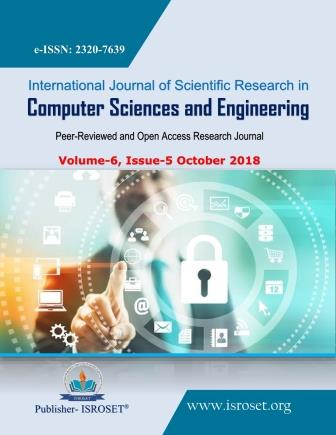Weather Prediction through Sliding Window Algorithm and Deep Learning
Keywords:
Weather forecast, Sliding Window Algorithm, Deep LearningAbstract
There are currently many techniques present in the world to predict weather. However, none of them is sufficient in itself to accurately predict the weather on any given day, 100% of the time. At best what we have yet achieved is to come up with ways to reduce errors in current systems to make weather prediction more accurate. We, humans, have used satellite sensors to predict weather, we have used pattern recognition algorithms to predict future patterns in weather, but none is as accurate as we would like them to be. One such method to predict weather through pattern recognition is Sliding Window technique. This technique predicts weather through the data available to the system about previous year’s weather around that time. However, this technique is far from being even usable when it comes to efficiency, although it is a very fast method to predict weather and involve very less computations as compared to other techniques. Only if we can find a way to make this algorithm more efficient, that we can take advantage of its fast computational speeds to actually benefit from it. This paper presents a solution to greatly improve the efficiency of this method.
References
Y.Radika And M. Shashi, “Atmospheric Temperature Prediction Using Support Vector Machines,” International Journal of Computer Theory and Engineering, vol.1, no.1, April 2009.
Steve R. Gunn, “Support Vector Machines for Classification and Regression,” University of Southampton, 10 May 1998.
Dr. Rama Kishore, Taranjit Kaur , “Backpropagation Algorithm: An Artificial Neural Network Approach for Pattern Recognition,” International Journal of Scientific & Engineering Research, Volume 3, Issue 6, June 2012
Dr.S.SanthoshBaboo and I.KadarShereef, “An Efficient Weather Forecasting System Using ANN” International Journal of Environment science and development, vol.1, no.4, October 2010.
James Lani, “Time Series Analysis,” Statistics Solutions, 21st December, 2010.
Abhishek Agarwal,Vikash Kumar, Ashish Pandey, Imran Khan, “ An Application Of Time Series Analysis For Weather Forecasting”, International Journal Of Engineering Research Application ,Mar - Apr 2012.
Ahmad Shahi, RodziahBintiAtan, Md. Nasir Sulaiman “An Effective Fuzzy C-mean And Type-2 Fuzzy Logic For Weather Forecasting” Journal Of Theoretical And Applied Information Technology , 2009.
Jiangtao Ren, Sau Dan Lee, Xianlu Chen, Ben Kao, Reynold Cheng, David Wai-Lok Cheung , “Naïve Bayes Classification of Uncertain Data,”Ninth IEEE International Conference on Data Mining, March, 2009
Prashant Biradar, Sarfraz Ansari, YashavantParadkar, Savita Lohiya, “Weather Prediction Using Data Mining,” IJEDR, Volume 5, Issue 2, November, 2017
AmjadHudaib, Rola Al-Khalid1, Aseel Al-Anani, Mariam Itriq, Dima Suleiman, “Four Sliding Window Pattern Matching Algorithms,” Journal of Software Engineering and Applications, 2015, 8, 154-165, March, 2015
Piyush Kapoor, Sarabjeet Singh Bedi, “Weather Forecasting using Sliding Window Algorithm,” ISRN Signal Processing, Volume 2013, 19th August, 2013
Charles A. Doswell Iii And Robert A. Maddox ,“The Role Of Diagnosis In Weather Forecasting” 11th Conf.Weather Forecasting And Analysis June 1986
Downloads
Published
How to Cite
Issue
Section
License

This work is licensed under a Creative Commons Attribution 4.0 International License.
Authors contributing to this journal agree to publish their articles under the Creative Commons Attribution 4.0 International License, allowing third parties to share their work (copy, distribute, transmit) and to adapt it, under the condition that the authors are given credit and that in the event of reuse or distribution, the terms of this license are made clear.







